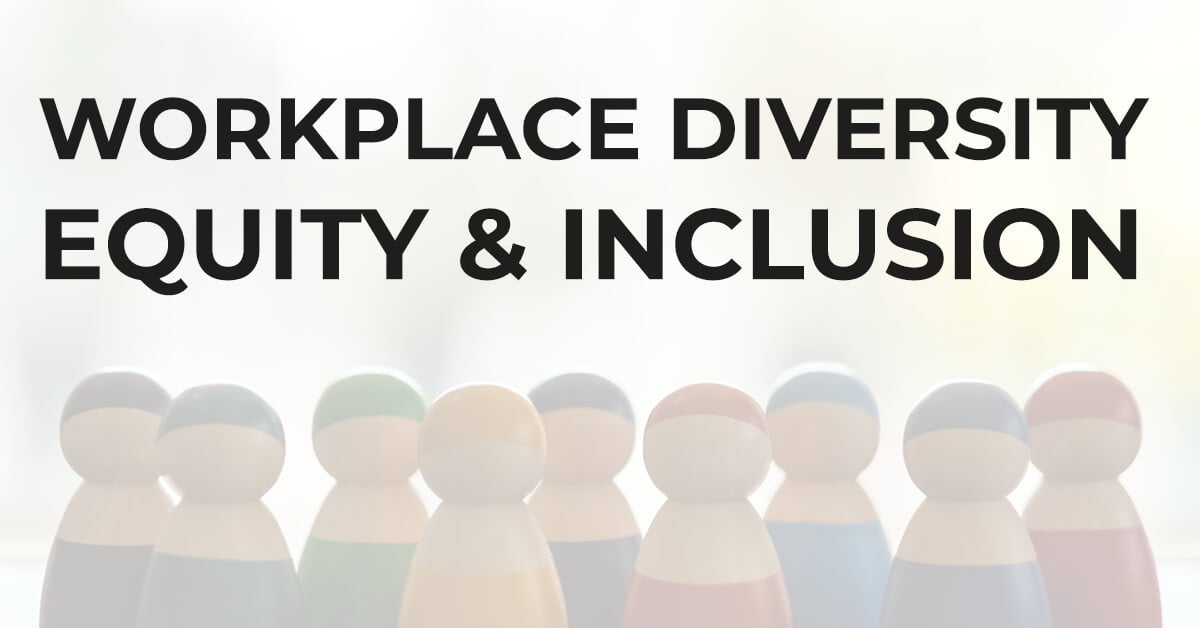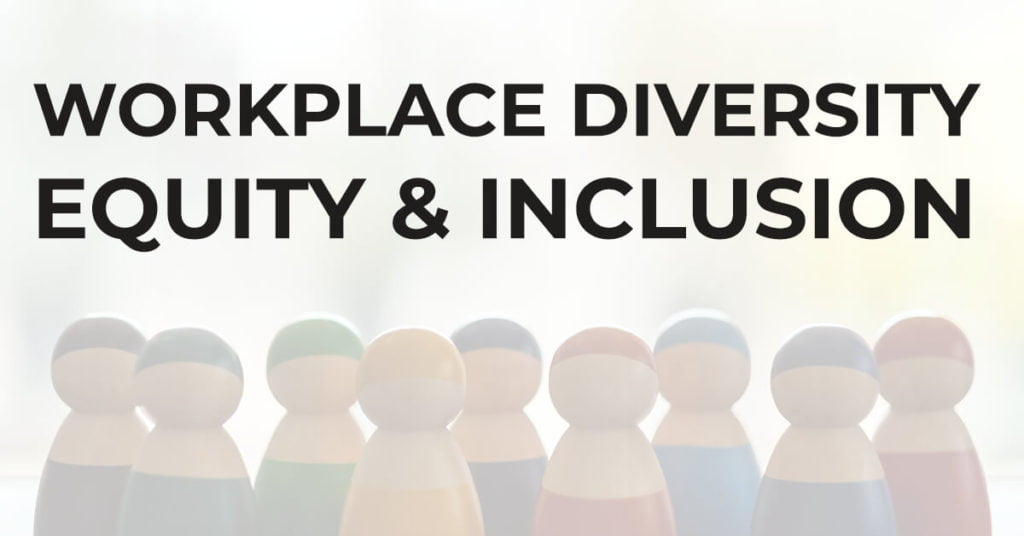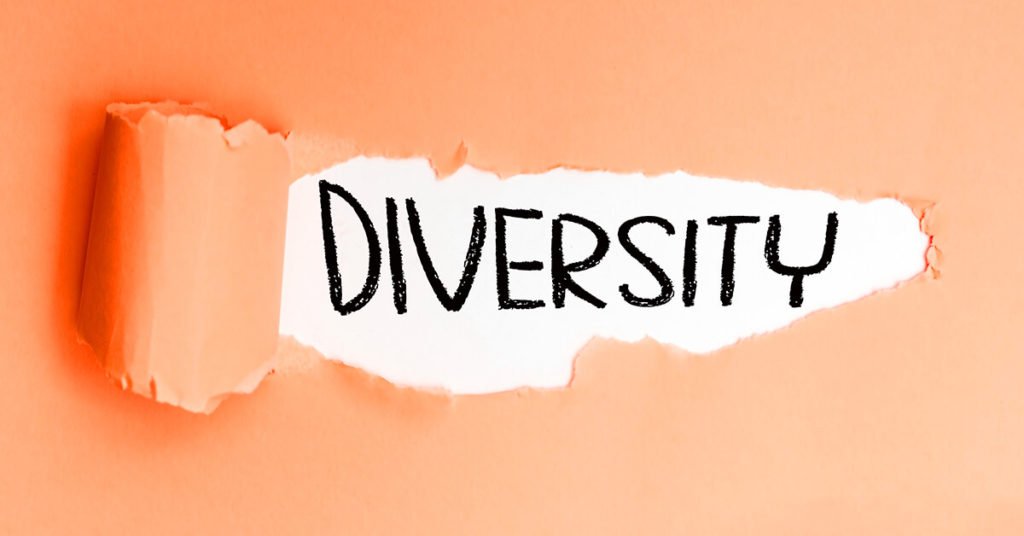Workplace Diversity, Equity, and Inclusion


In today’s global and multicultural world, it is not enough to leverage the benefits of diversity. In order to succeed in the future, businesses must know how to value and leverage differences among employees. Diversity is not just a buzzword; it is critical for success in a knowledge economy that demands innovation, agility, and creativity.
This article will discuss the importance of companies and their human resources departments creating and implementing workplace diversity, equity, & inclusion policies and programs in order to fully realize the benefits of diversity at work.
This article will also explore what diversity means for organizations as well as specific steps that can be taken by HR professionals as they help drive culture change towards greater inclusion within themselves or their organization.
What is Diversity?
Diverse groups of people cover a variety of races, ethnicity, culture, gender identity and orientation, religion, political beliefs, and differing abilities. This can include the full spectrum of visible differences from people with disabilities to those with physical or mental challenges. Diversity also extends to those who speak different languages or who have other barriers to accessing and understanding others’ language or culture. These differences are critical for success in both business and daily life.

Diversity is a resource for organizations. When individuals, groups, and processes come together in a dynamic way to create something new, it is known as innovation. Innovation is at the heart of the ability of organizations to move into the future. For organizations that have the commitment and ability to embrace difference, diversity can mean a richer pool of talent from which to draw for new ideas and solutions.
Why is Diversity Important?
Developing an inclusive culture requires people with different experiences, beliefs, and values – or what many refer to as “diverse backgrounds.” The results can be surprising – not only do diverse people bring new perspectives to business but they also increase innovation, productivity, and profits. Beyond the bottom line, workplace diversity helps organizations attract and retain a broader range of talent. It can also directly benefit employees who value diversity for the sense of belonging that it provides.
Diversity programs are intended to break down barriers by helping all people recognize that we have more in common than differences. Programs seek to broaden perspectives, remove biases and empower all employees, regardless of race, ethnicity, or gender. Diversity programs promote inclusion, encourage openness and create a culture where all employees have an opportunity to succeed regardless of their gender identity, sexual orientation, or the community they come from or identify with.
Barriers to Diversity
An organization that is not inclusive of diversity might be perceived as being hostile to people of different backgrounds. This can lead to employees not feeling comfortable coming forward with new ideas or concerns for fear of being “put in their place.”
For example, a female employee working in a male-dominated industry may feel intimidated by her work environment and therefore be less likely to voice her opinion in meetings even when she has something important to say.
Another barrier is companies that do not make diversity initiatives a priority.
Organizations with this attitude often feel there isn’t much more that can be done because they already have programs and policies in place. However, it is important to remember that existing programs should be continuously evaluated and reinforced. If a diversity program is working well, continue it. If there are areas for improvement, work with your management team to identify them and make changes to the program.
Barriers can also occur when employees aren’t engaged in the process or aren’t aware of what their role should be as part of an overall Diversity and Inclusion strategy. When companies take steps towards creating a culture where diversity is embraced and valued, employees feel more included in decisions, are better able to network with their teams, and understand how they can contribute to a workplace that values different perspectives.
Diverse teams can also have a positive impact on an organization. Research has shown that diverse teams are able to surmount many challenges and are more likely to be innovative, creative, and better able to solve problems. The benefits of having a diverse team extend far beyond the financial. When employees feel valued, supported, and heard, they can work harder and make better decisions for their organization. This has a direct impact on success at work.
Creating a Diverse Culture
The first step in creating a welcoming environment for diversity is having managers actively involved in the process of learning about diversity issues. For example, when discussing why certain policies were implemented or changes were made it’s important that management hears from those who have experienced those issues firsthand.
In addition, managers should help set the tone for the organization by being inclusive and taking the time to understand what their employees need. They can do this by communicating with employees regularly and openly and going to staff meetings or events where diversity is discussed. Often managers are not part of the inspiration for change in diversity initiatives, which can make it harder to build an inclusive culture at work. However, they have an important role in creating a diverse workplace through modeling inclusion and being aware of ways they might be contributing to barriers that may exist within their organizations.

Creating a diverse workplace isn’t always easy. While it’s important for companies to take steps towards becoming more inclusive, considering different perspectives will not happen overnight. But as with other challenges, it is important to look at what people are doing right as well as what they are not. The most important step in creating a diverse workplace is promoting acceptance and respect throughout the organization. One way to do this is through the training of hiring managers who can steer clear of hiring decisions that are based on bias.
Another way is by encouraging employees to come forward when they feel excluded or when they witness something that makes them uncomfortable. Interview questions should be asked equally of all applicants and interviewers should refrain from using slang, phrases, or comments that may show bias. Hiring managers should also make sure that interviewers are familiar with the company’s anti-discrimination policy. These simple steps can make a real difference in promoting diversity and fairness in hiring and employee treatment. Organizations that have demonstrated success in implementing Diversity and Inclusion programs include Google Inc., Comcast Corporation, Microsoft Corporation, Apple Inc., Marriott International, and Booz Allen Hamilton.
Networking plays an important role for everyone in the corporate world. However, for minorities (women and people of color), networking is even more important since they tend to be less represented on corporate boards than other men or white women. At the same time, white men have the highest representation on these boards.
Recruiting and retaining diverse talent is another way to help create an inclusive environment at work. Finding and hiring staff who represent a variety of backgrounds will help create an atmosphere where employees feel confident that they can bring their whole selves to work. This can make a huge difference in fostering innovative thinking and providing employees with greater professional development and growth opportunities.
In addition, when hiring managers seek out job applicants from different demographics they are more likely to find a diversity of skills, education, experience, and perspective that can help improve their team’s overall success. Organizations that have taken steps to create more diversity on staff, such as promoting and retaining women of color and people with disabilities, have been shown to reap the rewards of a more diverse and inclusive workplace.
When people feel valued, they can be more creative, work harder and contribute to their organization in a meaningful way.
Diversity is crucial to the success of any company. At the same time, it’s important to remember that creating a diverse workforce is not a one-size-fits-all solution. Every organization has its own unique makeup that will require different approaches based on its climate and culture. A successful diversity initiative comes down to creating an environment where employees are engaged in the process and feel respected for their contributions.
Diverse workforces are more likely to be innovative, creative, and better able to solve problems. Research has shown that diverse teams are able to surmount many challenges and are more likely to be innovative, creative, and better able to solve problems. The benefits of having a diverse team extend far beyond the financial. When employees feel valued, supported, and heard, they can work harder and make better decisions for their organization. This has a direct impact on success at work.
There are many tools available to help companies evaluate their inclusion efforts. Following these tips will allow companies and organizations to better understand their strengths and challenges in creating a diverse and inclusive workplace. Measuring a company’s inclusiveness can be done through the use of a survey that measures both perception and cultural aspects, as well as having internal workplace demographics. Surveys can be designed and implemented by a diversity consultant or directly by the company’s HR department.

There are also many resources available to help companies and organizations with their efforts. Many initiatives and programs that have been established for companies, in general, are also applicable to diversifying the workplace.
To drive engagement, activities must be designed with the inclusion of all parties in mind. Specific attention should be paid to what minorities and women need and want, so they feel valued and included. This will help create a more inclusive environment where they feel like they can bring their whole selves to work every day.
According to the Harvard Business Review: “Women of color have always known what it feels like to be outsiders in a white male-dominated world. But with the changes in demographics, we’re now seeing that white women are feeling like outsiders in their own spaces.”
The following list will give you an idea of how some organizations are working to make sure their employees feel valued and included. In addition, gender equality is important to all employees, and most companies would rather see equal representation of gender than create an environment where women face discrimination. Although it may seem like an obvious solution, some companies may need to implement unconscious bias training before they will make significant strides in gender equality.
It may be difficult for a company to know what needs to be implemented in order to create an inclusive environment. There are a variety of resources available online and in print that can help drive awareness of the importance of diversity and inclusion. There are also a variety of companies that specialize in this area and can help in the implementation of these programs. If you need help with developing a workplace diversity, equity, and inclusion strategy, consider contacting Career Strategy Consultants for further assistance.

More Than Just Staffing
For Employers
For Individuals
